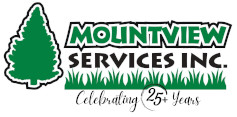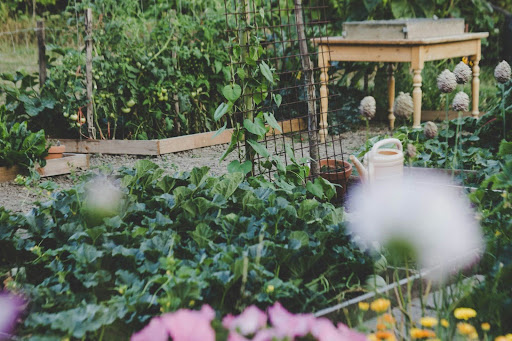Creating an outdoor space that looks gorgeous and tastes impressive is surprisingly simple to achieve. In fact, the concept of separating edibles and ornamentals is a relatively new idea. Read on to learn more about the practice of ‘edible landscaping’ and how to transform your yard into a livable and functional retreat.
What is Edible Landscaping?
Edible landscaping involves the incorporation of culinary herbs, vegetables, fruit-bearing trees and plants, and edible flowers into an individual outdoor space. The best way to get started is to choose one or two plants that you find attractive that are also edible and incorporate them into your existing outdoor space.
The practice of edible landscaping (also known as foodscaping) benefits your yard, your family, and the planet as a whole. When you think about all of the resources that go into maintaining a grass lawn, or growing impressive flowers such as peonies and hydrangeas, it becomes clear that there is little reward for all your hard work beyond the fleeting beauty of these plants.
Creating an Edible Landscape
Choosing your Plants: When choosing plants for an edible landscape, it is essential to choose species that are ornamental but perhaps not overly appealing to local wildlife, as they may decide to come and consume all of your edibles. If you are a pet owner, it is also important to choose plants that are not toxic to your pets.
Add Colour: Adding colourful edible plants to your landscape will make for a visually appealing scene outdoors and on your plate. Consider adding rainbow chard, strawberry plants, and colourful edible flowering plants to your space.
Consider Your Tastes: Think about what fresh food and plants you especially love to eat, and add those to your garden. If you love salads, consider growing arugula or lettuce. If you love a mojito in the summer, grow a lush mint plant!
Use Existing Structures: If your outdoor space has a trellis, fence, or arbor, consider planting some vining fruits. These structures and vines add visual interest to your yard while also increasing privacy and shade.
Create Contrast: Choose plants that will create contrast within your space by incorporating plants that will produce vibrant flowers, as well as greens and darker shrubs.
Use Containers: Smaller edible plants can thrive in containers, allowing you to move and place the containers where they will thrive and complement your other plants.
The Best Fruit Trees, Shrubs, Herbs, and Vegetables for Edible Landscaping
Some of the best (and easiest to grow and care for) plants to consider for your edible landscape include:
Fruit Trees – Consider planting a dwarf peach, apple, pear, plum or cherry tree. These trees will produce gorgeous blossoms as well as delectable fruit. They can also be trained to grow along a fence, wall, or against the side of your house or garage.
Climbing Vines – Climbing vines can act as a cover or screen within your outdoor space. While these vines may take several years to achieve fruiting size, it is always worth the wait.
Brambles – Brambles that produce blackberries or raspberries are typically easy to grow and can make ideal hedges. While they do best in full sun, brambles will still produce a significant amount of fruit in areas of light shade.
Herbs – Adding herbs to your gardens and flower borders is a great idea. Some of the best herbs for edible landscaping include thyme, rosemary, sage, and oregano as they possess attractive foliage and add herbal scents to your space.
Onions, Chives & Garlic – These functional and ‘aromatic’ plants are embraced in the kitchen, but are not popular amongst wildlife. These alliums can work to create a border that can help to keep critters away from your other more delicious plants.
Salad Greens – Ideally, most varieties of greens should be grown in raised beds or containers to keep them safe from wildlife. They can also be incorporated into flowers and other gardens as well. Consider such greens as Swiss chard, kale, and varieties of lettuces.
Vegetables – A wide variety of beautiful vegetables can work incredibly well in edible landscapes. Consider including growing artichokes, eggplants, hot peppers, tomatoes, pole beans, and squash in your vegetable garden design.
Edible Flowers – This may seem like an obvious addition, but don’t neglect to add beautiful edible flowers to your outdoor space. They can look gorgeous in salads, baked goods, and soups and can be very delicious. Pansies, Lavender, Calendula, and Nasturtiums are great plants to consider.
Tasteful Landscaping – The Bottom Line
When it comes to creating an edible landscape, it is important to embrace a practice that includes experimenting, being creative, and allowing the plants to lead the way. Vegetables and herbs look gorgeous when planted alongside ornamentals, and don’t have to be banished to the backyard only. Creating an edible landscape and a garden-to-table experience means getting the most out of your outdoor space. If you want to learn more about the practice of edible landscaping or to receive a landscape maintenance quote, contact us at Mountview Services today!

